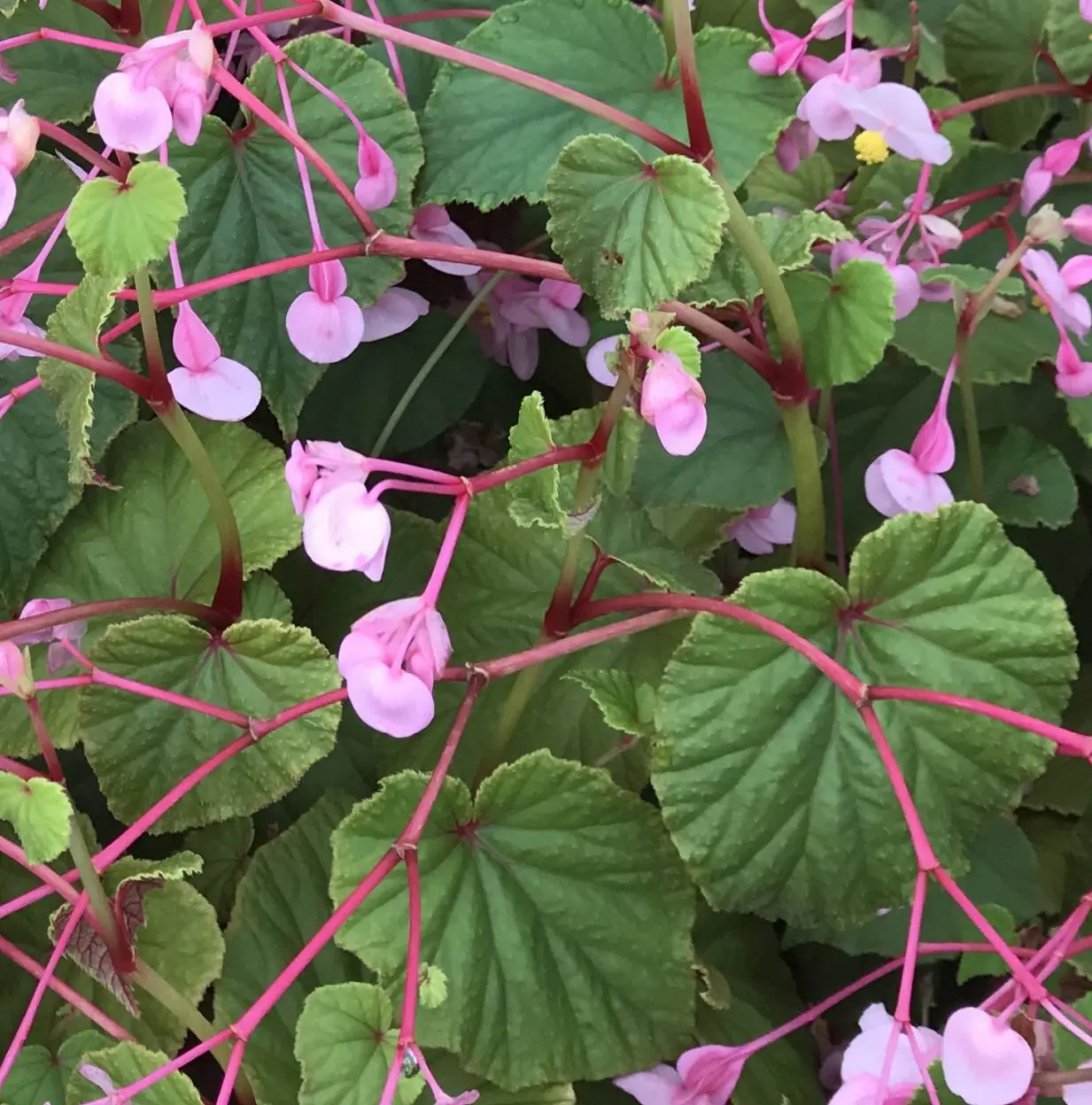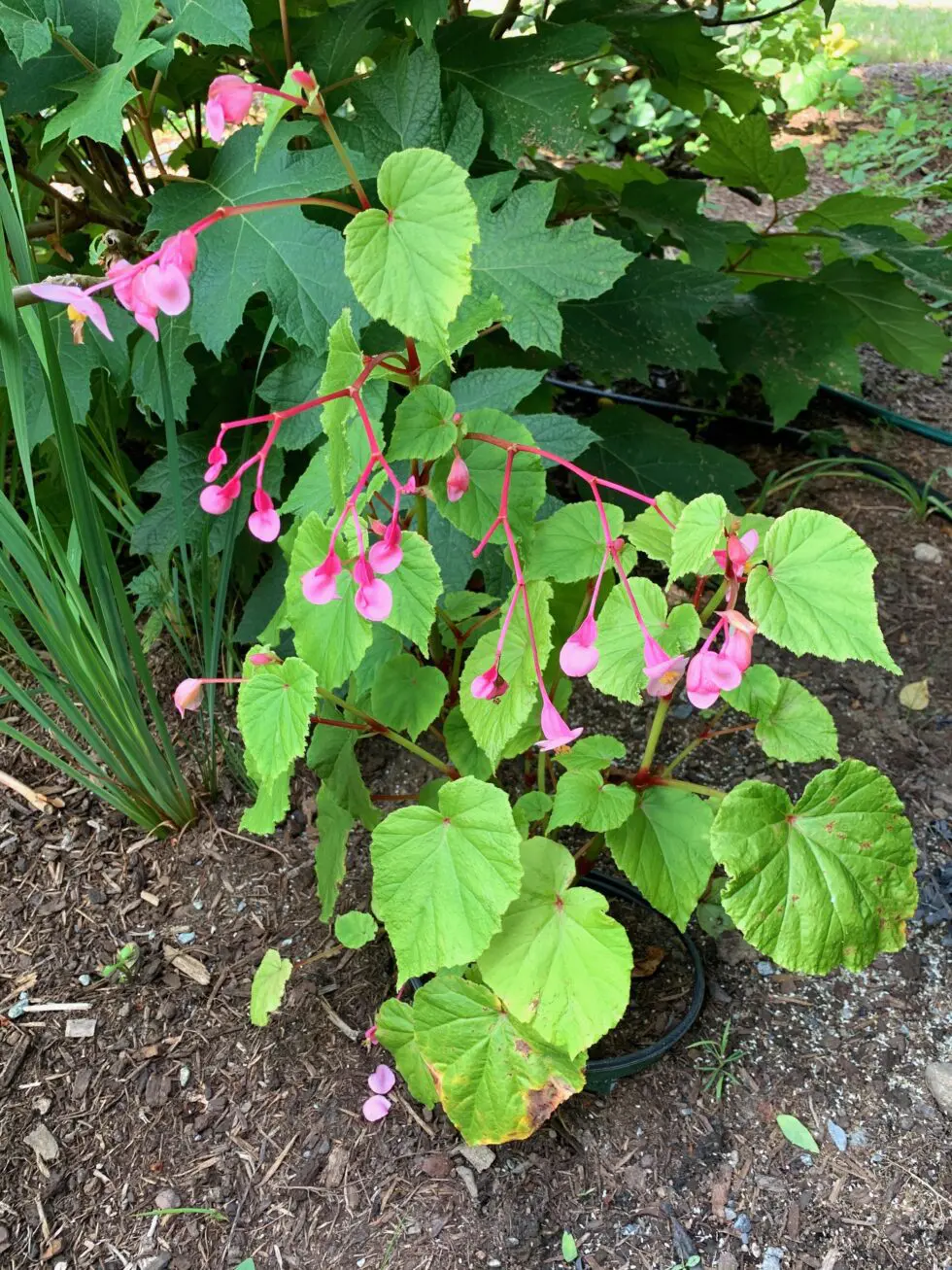Begonia grandis ssp. evansiana is commonly called the hardy begonia because it can survive winters to USDA Zone 6. It is also incorrectly known as B. discolor and B. evansiana. It is a species that comes from China and was published in 1939.
The Thompsons, in their book BEGONIAS: The Complete Reference Guide, classify it as a tuberous tall-growing species. This plant can make quite a spectacular display starting in late summer through early fall in the garden. The 2-to-3-foot plants load up with loose floppy clusters of soft pink fragrant blooms. They can be used for temporary hedges because of their vigorousness.
However, as the days start growing shorter, chemical changes happen in the plant and, like others in the tuberous group, it starts going dormant. It becomes particularly susceptible to mildew, the leaves start turning yellow, and the plant starts falling apart at the joints.
But somewhere between becoming more susceptible to mildew and the yellowing of the leaves, something else starts happening. Bulbils form in the leaf axils. These are tiny asexual formations that get to be the size of a small pea that fall to the ground and sprout the following spring. That is how a planting of one or two plants in the garden become a small colony after a couple years.
If grown from seed, a range of leaf color and texture results in the seedlings. The foliage color ranges from light to a bronzy green. The leaf texture is from smooth to lightly pebbly. However, if the bulbils are used, the plant will be just like the parent.
If the bulbils are gathered and planted in pots, it is important not to cover them; they will not sprout. They must be pressed into the surface of the medium with the tops exposed. They do need to be protected from freezing. The Zone 6 hardiness in wintery areas is dependent on a snow cover or some other kind of mulching. While freezing is rare here, it should be planned for. Interestingly, this plant has been used in hybridizing with plants from different groups of begonias including shrubs, semps, rhizomes, and rexes. The resulting plants are classified as canes, shrubs, semps, rhizomes, rexes and trailing scandents. The cold hardy characteristic, however, doesn’t seem to pass through to its progeny.
Probably is the most spectacular hybrid being a cross done with another tuberous species from Bhutan. The plant is B. ‘Torsa’ and is very similar to B. grandis ssp. evansiana except that the leaves grow to be over eighteen inches in width. It doesn’t get a tall either. It, too, propagates from bulbils.



